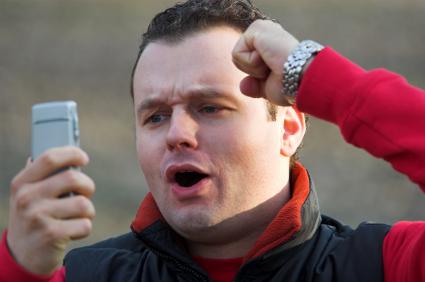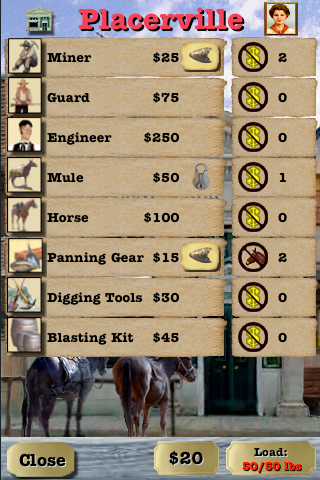Entries in mobile health application (18)
Multi-Channel, Multi-Touch Approach to Maximize Member Engagement
 January 4, 2011
January 4, 2011  Innovative health plans are experimenting with an expanding set of marketing channels to motivate members including mobile and social media. They are getting smarter about synchronizing these touches for maximum member response.
Innovative health plans are experimenting with an expanding set of marketing channels to motivate members including mobile and social media. They are getting smarter about synchronizing these touches for maximum member response.
In addition to staying aligned with their members’ evolving needs, Plans must reach members where they are, in a way that is ‘meaningful’ to that member to motivate healthy outcomes.
During this moderated panel discussion, you will learn how Plans are:
- Understanding the consumer’s changing behavior in this social and economic environment
- Synchronizing their segmentation and personalization strategies across the communication channels
- Testing new media and mobile approaches to build member loyalty
- Delivering consumer education to address member confusion with plan and care options
Moderated by Sherri Dorfman, CEO & Consumer eHealth Engagement Specialist, Stepping Stone Partners
Panelists:
- Molly Goins-Cox, Head of Member Experience, Aetna
- Kevin Riley, VP of Innovation and Consumer Health Solutions Group, BCBS of Florida
- Mark Scrimshire, Director of Internet Channel Strategy, CareFirst BCBS
Successfully Engaging Teens Through Mobile For Better Health
 July 16, 2010
July 16, 2010  Over the weekend I had dinner with close friends who told me about their teenage daughter and her sleepover with few girl friends. “All three of the girls had their cell phones lined up and plugged in a charging side by side on the night table”. Even when they are sleeping, teens keep their cell phones close by. While awake, these “digital natives” are continuously connected which provides opportunities for reaching and engaging teens in their health.
Over the weekend I had dinner with close friends who told me about their teenage daughter and her sleepover with few girl friends. “All three of the girls had their cell phones lined up and plugged in a charging side by side on the night table”. Even when they are sleeping, teens keep their cell phones close by. While awake, these “digital natives” are continuously connected which provides opportunities for reaching and engaging teens in their health.
Strong Statistics on Teen Mobile Usage
In Pew’s latest study of 12- 17 years old teens, there are interesting insights about teen's use of mobile technologies:
- Teens Have Mobile Phones. “Three-quarters (75%) of teens now have a cell phone”.
- Teens Texting for Connection. “Fully 72% of all teens – or 88% of teen cell phone users — are text-messages. That is a sharp rise from the 51% of teens who were texters in 2006.”
- Teens Texting Daily. Each day, 54% of teens text compared with 25% using social networking sites.
- Girls Texting Much More. Teenage girls tend to send and receive more texts each day, 80 compared with 30 for boys.
- Minority Teens Use Mobile for Internet Access. “44% of black teens and 35% of Hispanic teens use their cell phones to go online, compared with 21% of white teens”.
Influencing the Health of Mobile Teens
Organizations have been researching and piloting programs to learn how to impact the teen’s health behaviors for better outcomes.
After a successful pilot, the Murdoch Children’s Research Institute (MCRI) with the Telstra Foundation rolled out a program for teens (and young adults) that uses mobile to monitor their mental health including stress levels, coping strategies, dietary and fitness factors.
The NY Times reports that Mount Sinai Hospital has researched and learned that sending text messages to young liver transplant patients can improve their medication adherence and “avoid life-threatening complications”.
Partner’s Center for Connected Health recently ran a pilot with pregnant teens with the goal of using mobile for outreach. OB Case management sent SMS text messages about proper pre-natal care and regiments. These messages were educational and prompted the teens to take an action such as attend an office visit. “We learned that the texting strengthened the relationship- 83% reported feeling more supported by the health center case manager”, explains Alex Pelletier, Team Lead, Program and Product Development at Partners. More about this pilot from Alex on my upcoming World Congress panel, Generating Mobile Engagement Through Consumer Segmentation, Crowd Sourcing and Personalization.
Future Mobile Teen Projects:
The Robert Wood Johnson Foundation recently granted $2.4M to mobile health project including one from the San Francisco State University – San Francisco, California targeting teens from low-income backgrounds who experience much higher rates of obesity. To help these teens manage their obesity and depression, the University will evaluate the capturing of observations of daily living (ODLs) through smart phones and sharing of the data with their care team for planning and care management.
Teens are dealing with many different health issues while on the go managing their busy lives. Their health concerns span their physical and mental health which may include juvenile diabetes, obesity, asthma, sexual health problems and even autism.
How is your organization targeting this segment of “digital natives” around health? How are you leveraging mobile technologies to reach, influence and impact them to have healthier bodies and minds?
Humana’s New Mobile Health Applications Are Designed to Engage and Entertain Consumers
 June 22, 2010
June 22, 2010  Have you seen the latest mobile offerings that Humana has brought to the market? Actually, they are in the mobile “health entertainment” space.
Have you seen the latest mobile offerings that Humana has brought to the market? Actually, they are in the mobile “health entertainment” space.
Let me share my conversation with Julie Kling, from Humana's mobile strategy group to shed more light on the direction of their mobile health applications.
Sherri (Stepping Stone Partners):Just last week, Humana launched a new mobile health app called GoldWalker. Why is Humana interested in bringing mobile health applications to the market?
Julie (Humana): Humana is particularly interested in developing mobile health applications that enhance the consumer’s physical and emotional wellbeing.
Our latest mobile health game, GoldWalker, is designed to get people walking and exercising. In fact, my activity level which is measured by an accelerometer embedded in the iPhone moves me through this Gold Mine adventure where I find gold and fend off bandits. GoldWalker connects physical activity with game play.
Sherri: Last month, Humana introduced Hands2gether. What was the thinking behind this mobile health application?
Julie: Hands2gether was created to improve a person’s emotional wellbeing. You simply clap your hand with your iPhone to register your mood. The more you clap, the happier you are on the smile scale. By sending this to a friend, you not only spread happiness but also make yourself feel better.
Sherri: The buzz around most mobile conferences is around “location based services” such as Foursquare. How is Humana considering leveraging these types of mobile services?
Julie: This is an area that Humana is actively exploring. We have an opportunity to offer members incentives to frequent healthy places from restaurants to the gym. We can reward them with health- related prizes as well as the recognition that comes with “badging”. We also believe that people with certain health interests or conditions will want to meet up at a nearby location.
Julie Kling will be speaking at the upcoming World Congress Mobile Health Conference on my “Generating Engagement Through Segmentation, Crowd Sourcing and Personalization” panel. Julie will be presenting examples from Humana in mobile health gaming and care collaboration areas.


